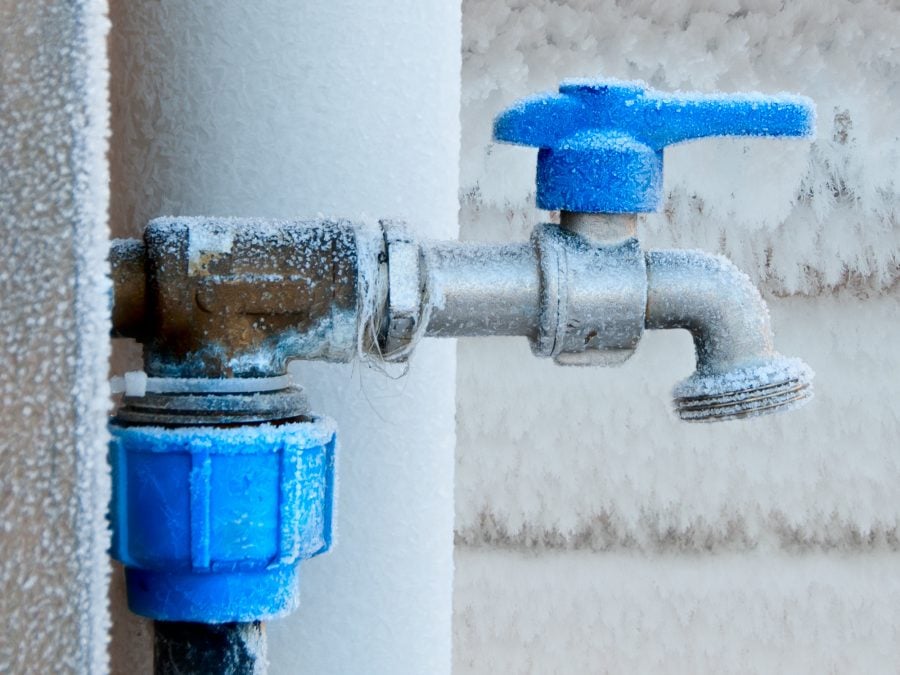Critical Approaches for Avoiding Frozen Pipes in Winter
Critical Approaches for Avoiding Frozen Pipes in Winter
Blog Article
What are your thoughts about Winter Plumbing Precautions: Preventing Frozen Pipes?

Cold weather can wreak havoc on your plumbing, particularly by freezing pipelines. Right here's how to avoid it from occurring and what to do if it does.
Intro
As temperatures decline, the risk of frozen pipelines increases, possibly bring about pricey repair services and water damages. Recognizing just how to avoid frozen pipes is important for property owners in cold climates.
Comprehending Frozen Pipelines
What triggers pipelines to freeze?
Pipelines freeze when subjected to temperatures listed below 32 ° F (0 ° C) for expanded periods. As water inside the pipelines freezes, it increases, putting pressure on the pipeline walls and possibly triggering them to rupture.
Threats and damages
Frozen pipelines can result in water system disruptions, residential or commercial property damage, and pricey repair services. Burst pipelines can flood homes and create considerable structural damages.
Signs of Frozen Piping
Recognizing frozen pipelines early can stop them from rupturing.
Exactly how to determine icy pipes
Search for decreased water flow from faucets, unusual smells or sounds from pipes, and visible frost on subjected pipes.
Prevention Tips
Insulating vulnerable pipelines
Cover pipes in insulation sleeves or utilize heat tape to secure them from freezing temperatures. Concentrate on pipelines in unheated or exterior areas of the home.
Home heating techniques
Keep indoor rooms adequately heated up, particularly areas with plumbing. Open up cabinet doors to allow warm air to circulate around pipelines under sinks.
Securing Outdoor Pipes
Yard hose pipes and outdoor faucets
Separate and drain pipes yard hose pipes before winter. Mount frost-proof faucets or cover outdoor taps with insulated caps.
What to Do If Your Pipes Freeze
Immediate activities to take
If you believe frozen pipelines, keep faucets available to soothe stress as the ice thaws. Make use of a hairdryer or towels soaked in hot water to thaw pipes slowly.
Long-Term Solutions
Architectural changes
Think about rerouting pipes far from outside wall surfaces or unheated locations. Add extra insulation to attic rooms, basements, and crawl spaces.
Upgrading insulation
Purchase top notch insulation for pipelines, attic rooms, and walls. Appropriate insulation assists preserve consistent temperatures and decreases the threat of icy pipelines.
Final thought
Stopping frozen pipes calls for aggressive procedures and quick feedbacks. By comprehending the causes, signs, and preventive measures, home owners can safeguard their pipes during cold weather.
6 Proven Ways to Prevent Frozen Pipes and Protect Your Home
Disconnect and Drain Garden Hoses
Before winter arrives, start by disconnecting your garden hoses and draining any remaining water. Close the shut-off valves that supply outdoor hose bibs and leave the outdoor faucet open to allow any residual water to drain. For extra protection, consider using faucet covers throughout the colder months. It’s also important to drain water from any sprinkler supply lines following the manufacturer’s directions.
Insulate Exposed Pipes
Insulating your pipes is an effective way to prevent freezing. Pipe insulation is readily available at home improvement stores and is relatively inexpensive. Pay close attention to pipes in unheated areas such as the attic, basement, crawl spaces, or garage. Apply foam insulation generously to create a buffer against the cold. You can also wrap your pipes in heat tape or thermostat-controlled heat cables for added warmth.
Seal Air Leaks
Inspect your home for any cracks or openings that could let in cold air. Seal any holes around the piping in interior or exterior walls, as well as the sill plates where your home rests on its foundation. Additionally, make sure to keep your garage door closed unless you’re entering or exiting. Leaving it open creates a significant air leak that can lead to frozen pipes.
Allow Warm Air Circulation
During cold snaps, it’s essential to allow warm air to circulate evenly throughout your home. Leave interior doors ajar to promote better airflow. Open kitchen and bathroom cabinets to help distribute heat consistently around the rooms. If you have small children or pets, be sure to remove any household chemicals or potentially harmful cleaners from open cabinets for safety.
Let Faucets Drip
A small trickle of water can make a big difference in preventing ice formation inside your pipes. When temperatures drop significantly, start a drip of water from all faucets served by exposed pipes. This continuous flow helps prevent the water from freezing. Additionally, running a few faucets slightly can relieve pressure inside the pipes, reducing the chances of a rupture if the water inside does freeze.
https://choateshvac.com/6-proven-ways-to-prevent-frozen-pipes-and-protect-your-home/

We had been shown that report on How To Avoid Freezing Pipes from someone on another domain. Feel free to set aside a second to distribute this entry if you appreciated it. Thank you for your time spent reading it.
Top Article Report this page